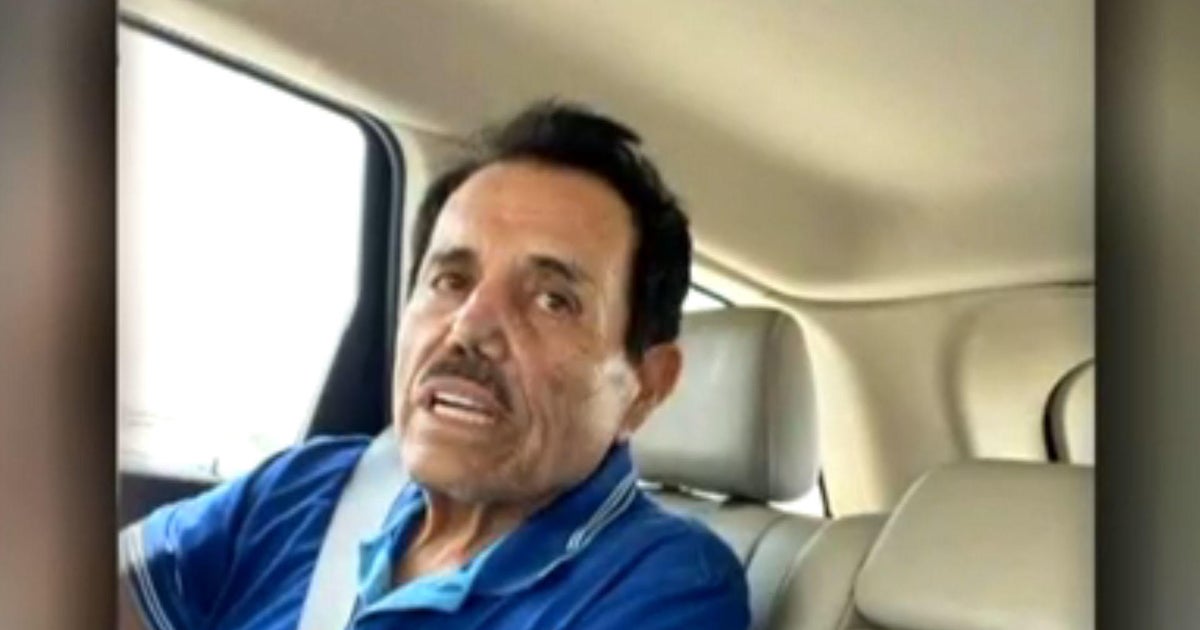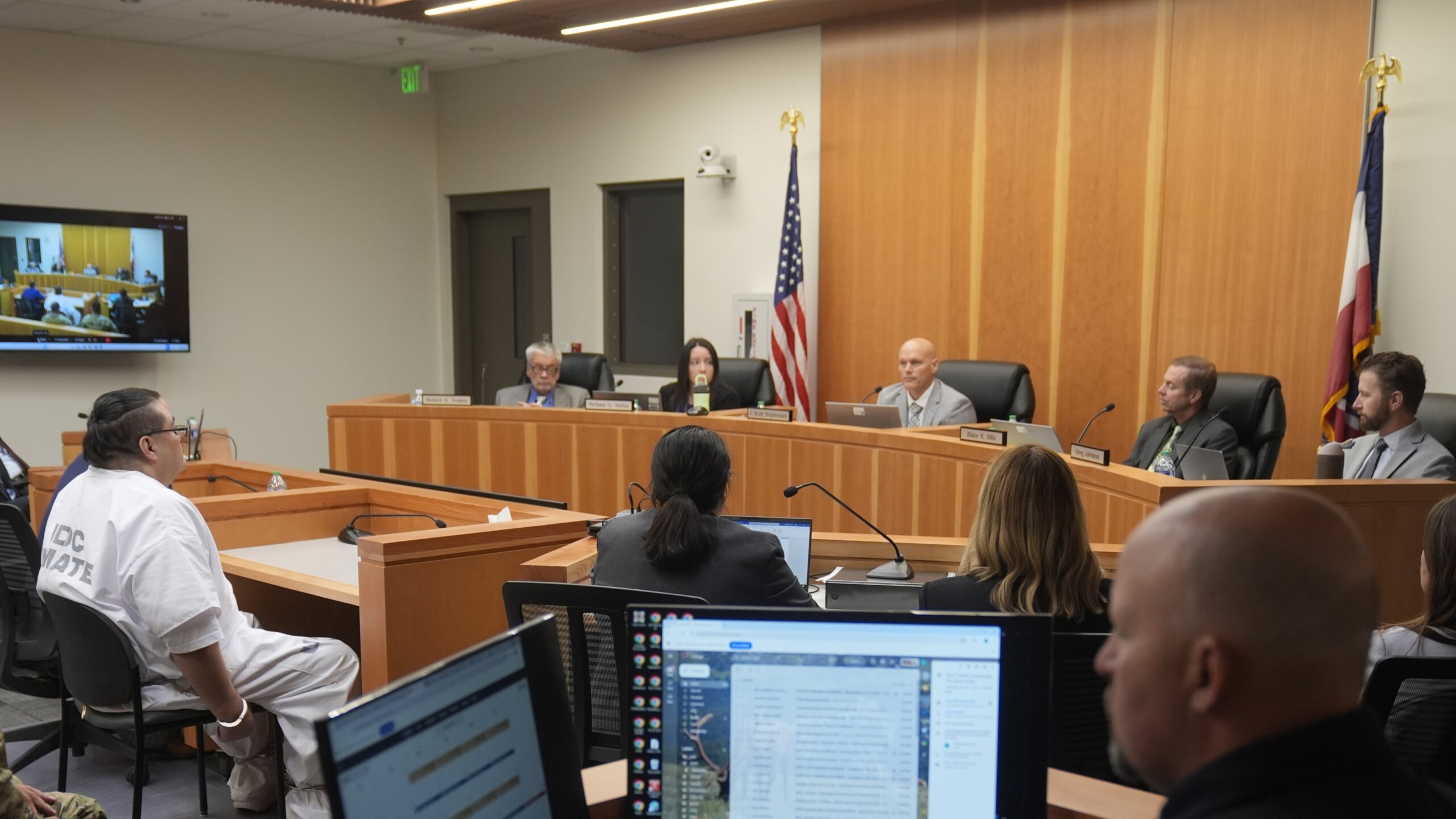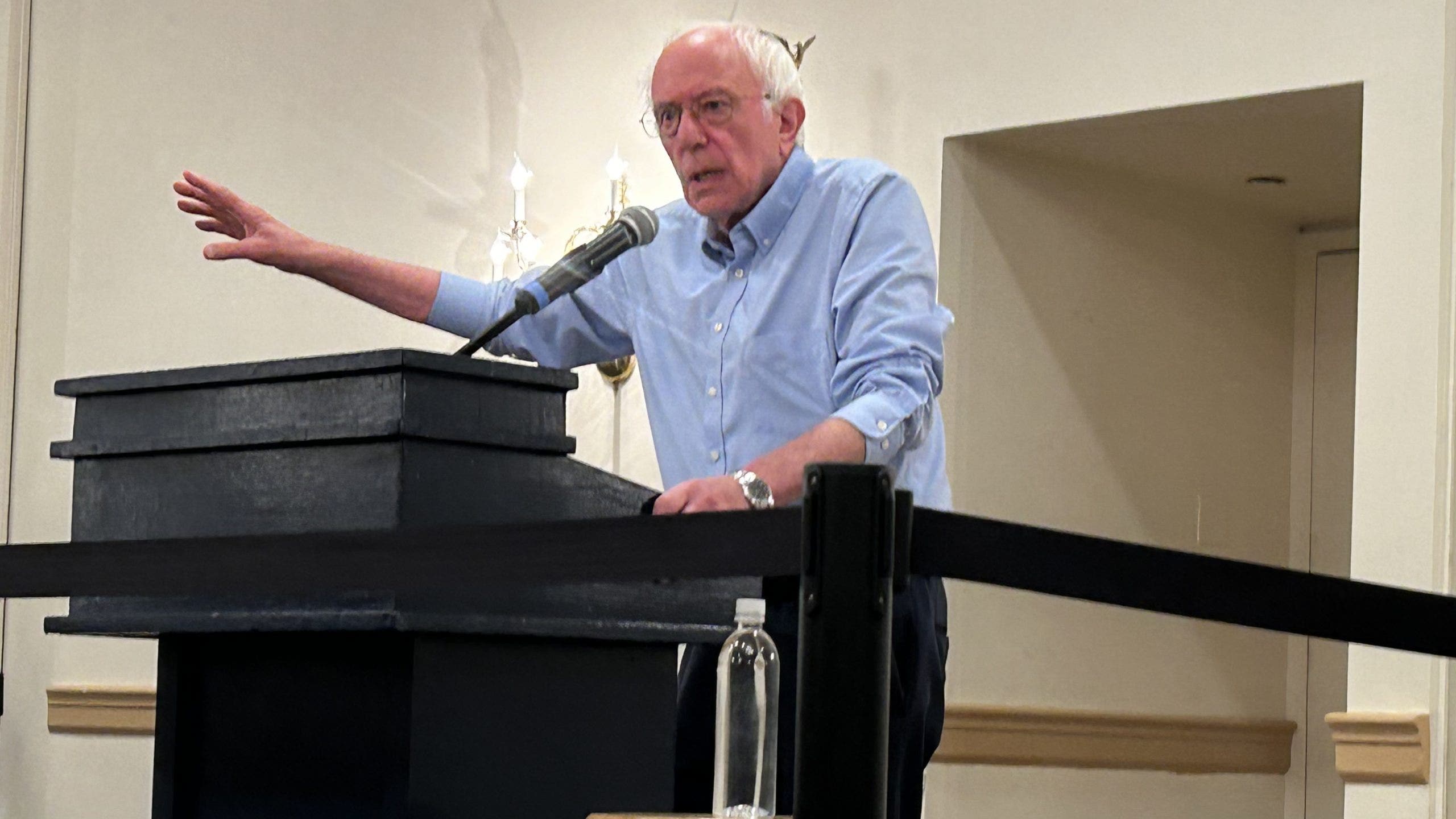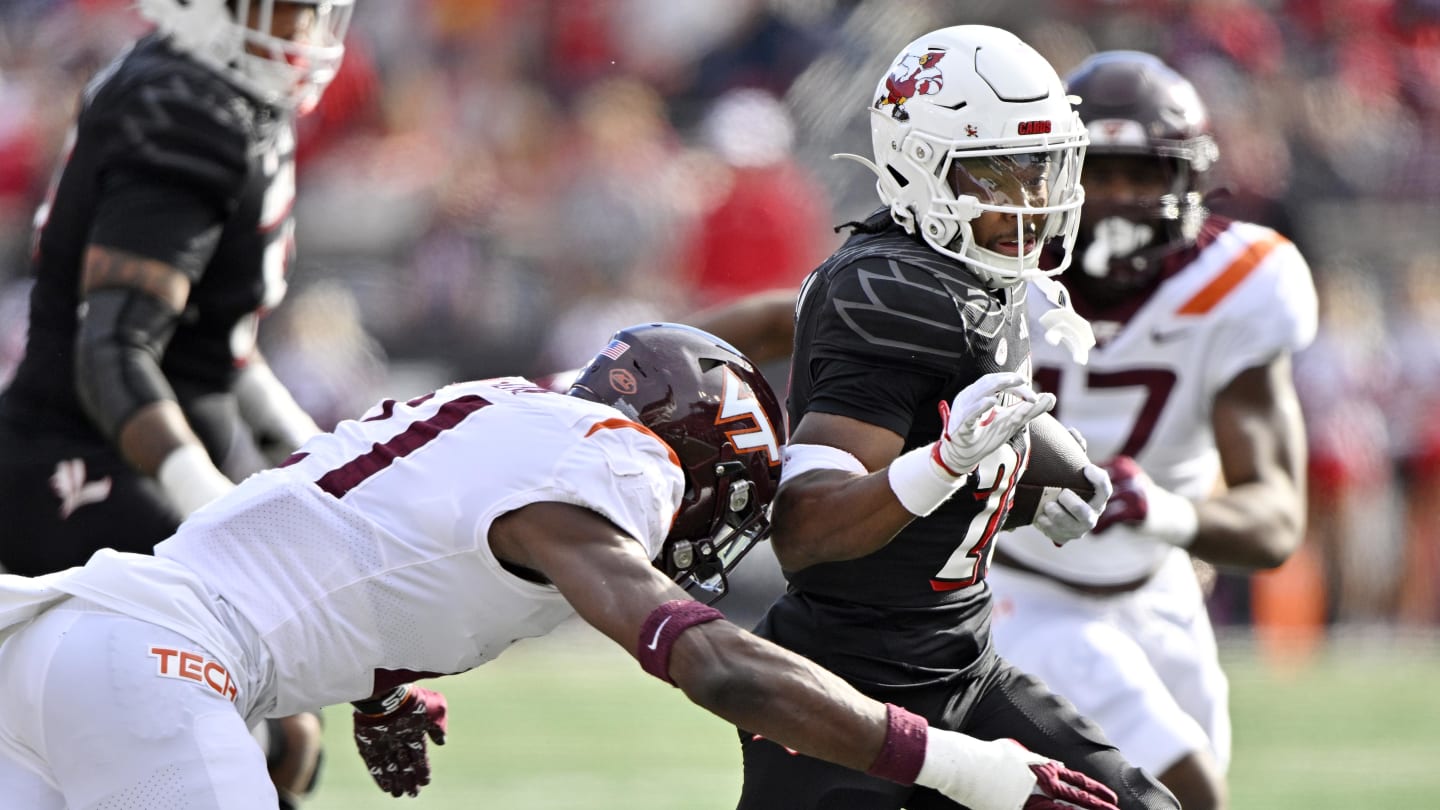Politics
LIV Golf Wants to Talk About Sports. Donald Trump Still Looms.

It was only on Sunday evening that LIV Golf, the men’s league awash in billions of dollars from Saudi Arabia’s sovereign wealth fund, met its greatest athletic triumph to date when one of its headliners, Brooks Koepka, emphatically won the P.G.A. Championship.
By Thursday morning, though, LIV’s road show had been reinfused with the political bent that has trailed the second-year circuit as it has convulsed professional golf: the loquacious, limelight-seizing presence of former President Donald J. Trump, who is hosting one of the league’s tournaments this weekend at a course northwest of Washington.
Whether LIV can outrun Trump’s shadow, and whether it even wants to, could do much to shape how the league is perceived in the years ahead, particularly in the United States, where it has struggled to gain a meaningful foothold against the PGA Tour.
But for now, besides major tournament winners like Koepka and Phil Mickelson who have joined the circuit, there is probably no figure beyond golf more publicly linked to LIV than Trump, who has repeatedly and enthusiastically cheered Saudi Arabia’s thunderous, flashy entrance into sports. At its events, he often seems like an eager M.C. whose role is at once decidedly conspicuous and deeply mysterious — neither the Trump Organization nor LIV have disclosed how much money the former president’s company is making for the events — as the league looks to make inroads in a hidebound sport.
“They want to use my properties because they’re the best properties,” Trump said on Thursday, when he spent five hours appearing in a pro-am event with the LIV players Graeme McDowell and Patrick Reed (and staging what amounted to a rolling news conference about politics and an infomercial about his property over 18 holes along the Potomac River).
The Trump portfolio does indeed feature some exceptional courses, including the Washington-area location, which once held a Senior P.G.A. Championship, and LIV executives have said in the past that they were drawn to them because many top-caliber properties in the United States were not willing to host a circuit intended to rival the PGA Tour. But Trump’s persistent, growing place in LIV’s orbit also invites sustained skepticism of the motives and intentions of the league, which some critics see as a glossy way for Saudi Arabia to rehabilitate its image.
The former president is unbothered by the league’s patron, Saudi Arabia’s sovereign wealth fund, and the kingdom’s budding place in professional golf, despite its record of human rights abuses. He is still casting aside objections from family members of Sept. 11 victims, some of whom believe Saudi Arabia played a role in the 2001 attacks, because, as he said Thursday, LIV tournaments are “great economic development.” He is openly admiring the millions and millions of dollars that the Saudis are raining down onto players and, of course, properties like his, even though he asserted Thursday that hosting tournaments amounts to “peanuts for me.” This year, LIV will travel to three of his properties, up from two in its inaugural season.
He has remained steadfast in his loyalty even though a special counsel from the Justice Department, Jack Smith, has subpoenaed the Trump Organization for records related to LIV.
In an interview as he walked between holes on Thursday, Trump described Smith’s aggressive approach as “retribution” because the Biden administration wants “to do something to take the spotlight off what’s taken place.” He said he did not know why his ties to LIV had drawn the special counsel’s scrutiny.
Trump’s affection for LIV can be traced, at least in part, to years of friction with golf’s establishment.
In 2016, the PGA Tour ended a longstanding relationship with Trump’s course in Doral, Fla., near Miami, because of what its then-commissioner described as “fundamentally a sponsorship issue.” And in 2021, after Trump supporters stormed the Capitol, the P.G.A. of America — which is separate from the PGA Tour — abandoned its plan to host its flagship men’s championship at a Trump property in New Jersey in 2022.
Trump has not fared much better abroad. The R&A, which organizes the British Open, has signaled it does not intend to take the tournament back to Trump-controlled Turnberry, where LIV’s commissioner, Greg Norman, won one of his two Opens.
LIV has embraced Trump, though, and in return gotten a former president’s imprimatur, along with bursts of news coverage for events that might have gone unnoticed otherwise. He brings prestige and power, diluted as both might be by the divisiveness in which he revels.
“They have unlimited money and they love it,” he said Thursday, “and it’s been great publicity for Saudi Arabia.”
But for every day Trump appears at a LIV event, it is a day that LIV might as well write off as one in which it will not escape the pointed questions that it has spent a year trying to move past, or at least saying it wants to move past.
It has been hard enough for the league, even on a day when Trump is not playing a round, not to have its players confronting questions about the morality of accepting millions in Saudi money.
“We’re contracted to play golf,” Bryson DeChambeau, the 2020 U.S. Open winner who finished in a tie for fourth at the P.G.A. Championship last weekend, said on Wednesday. “I think the most important part is to provide great entertainment wherever possible on whatever platform that is, whatever platform that provides it. When you can talk about ethics, that’s people’s perception. I completely disagree with it, but everybody has the right to their own opinion, and I’d say, was it worth it? Absolutely.”
But DeChambeau hardly has the same megaphone or presence as a former occupant of the Oval Office. When Trump appears at a LIV event, even winners of the Masters Tournament or the U.S. Open are relegated to supporting actors.
LIV executives have generally brushed aside questions about whether the former president is good for business, or merely essential for it, given their troubles landing quality venues. They seem convinced that, at some point, sports will overtake politics, which might be wishful thinking since Trump suggested Thursday that nothing — not even a return to the White House — would easily dissuade him from doing business with the league.
But LIV’s strategy still involves a gamble that the presence of one of the nation’s most polarizing figures will not scare off even more of the sponsorship contracts and television rights that are already proving hard to come by for the operation. And Trump can just as easily alienate prospective fans as he can entice them.
Trump himself insists that LIV craves him at its events and that he is not a distraction from the league’s proclaimed goal of growing the sport and giving it doses of needed energy.
“They wanted me to be here, and I said sure,” said Trump, who said that LIV’s contracts with his properties did not require his appearances in events like the pro-am.
Perhaps all of that is true. But as long as it is, LIV will linger in the political thicket, no matter how well Koepka plays on the game’s biggest stages.

Politics
Park Police union says officers ‘did everything they could’ during DC anti-Israel riot
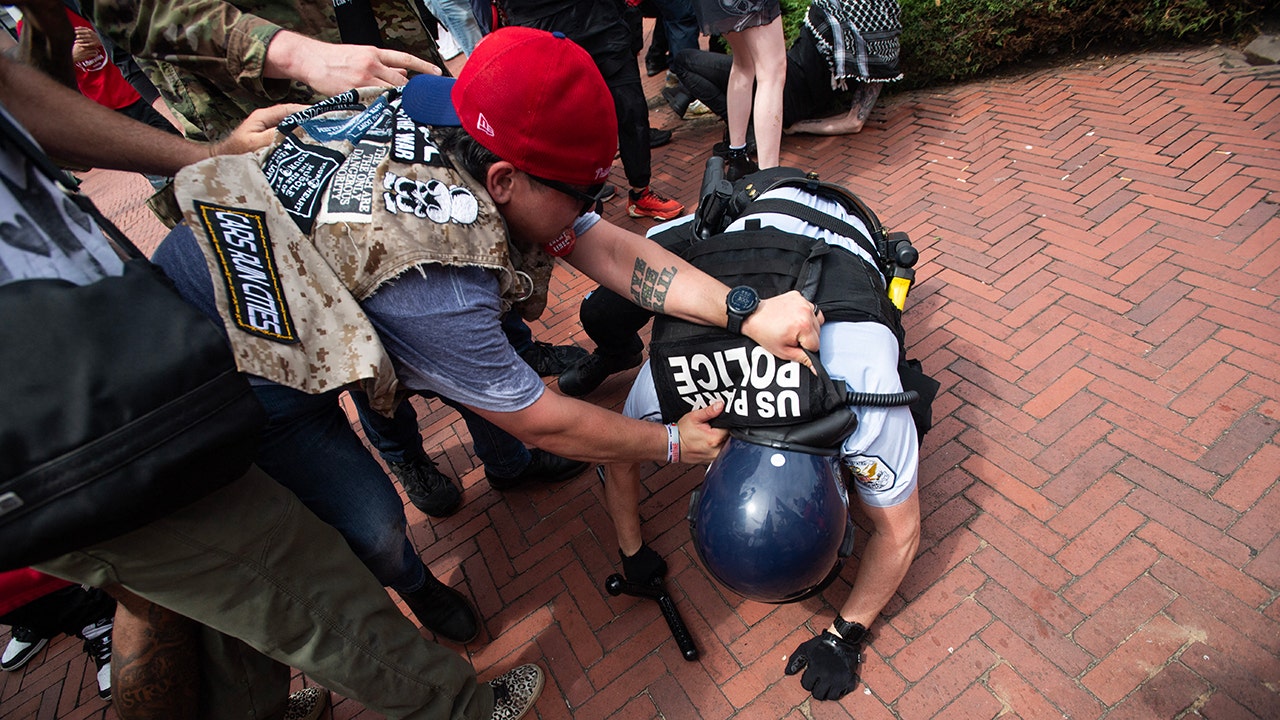
Following the protests at Union Station by anti-Israel agitators defacing federal property in protest of Israeli Prime Minister Benjamin Netanyahu’s address to Congress, a Park Police union is pushing back against criticism that only a few arrests were made.
Thousands of Hamas-sympathizing agitators descended on Washington, D.C., Tuesday, at one point defacing federal monuments with phrases in support of the terrorist group responsible for the Oct. 7 attacks in Israel, saying, “Hamas is coming.”
Twenty-three people were arrested at the protests, but some have suggested that number should have been higher.
Sen. Marco Rubio, R-Fla., posted on X, “How many more times are they going to allow leftist degenerates who support terrorism and hate America to vandalize property and attack police? There should have been hundreds of arrests today in D.C. not just 23.”
HOUSE REPUBLICANS REPLACE AMERICAN FLAGS AT UNION STATION AFTER ANTI-ISRAEL PROTESTS
The Columbus Memorial Fountain at Union Station during an anti-Israel protest on the day Israeli Prime Minister Benjamin Netanyahu addressed a joint meeting of Congress on Capitol Hill in Washington July 24, 2024. (Reuters/Seth Herald)
But the U.S. Park Police Labor Committee is pushing back.
“Our officers on the ground did everything they could to protect life and property. In fact, despite having only 29 officers available to mitigate damage — 29! — with no additional help from the Department of the Interior, we processed several arrests for charges ranging from assault on a police officer to destruction of government property,” Kenneth Spencer, chairman of the United States Park Police Fraternal Order of Police, said in a statement.
“That’s why it’s so disheartening to hear some members of Congress and members of the media, many of whom describe themselves as ‘champions’ of law enforcement, suggesting that officers gave protesters a ‘pass’ or that insufficient arrests were made.
“Nothing could be further from the truth. Anyone who truly cares to understand the problem would see that our officer staffing crisis is at the root of our agency’s mission readiness. A small unit of 29 officers arrested 10 individuals while being assaulted by a mob of thousands. We simply did not have the staffing or resources to accomplish a mass arrest operation.”
SEE IT: THE MOST DRAMATIC PHOTOS FROM WEDNESDAY’S PRO-HAMAS WASHINGTON, D.C. PROTESTS

An anti-Israel demonstrator sprays graffiti on the Christopher Columbus Memorial Fountain at Union Station on the day of Israeli Prime Minister Benjamin Netanyahu’s address to a joint meeting of Congress on Capitol Hill in Washington July 24, 2024. (Reuters/Nathan Howard)
At least one demonstrator, whose face was covered, was spotted by Fox News carrying what appeared to be the flag of the terrorist group Hamas while others were heard shouting “Allahu Akbar.”
KAMALA HARRIS REACTS TO ANTI-ISRAEL RIOTS AT DC’S UNION STATION
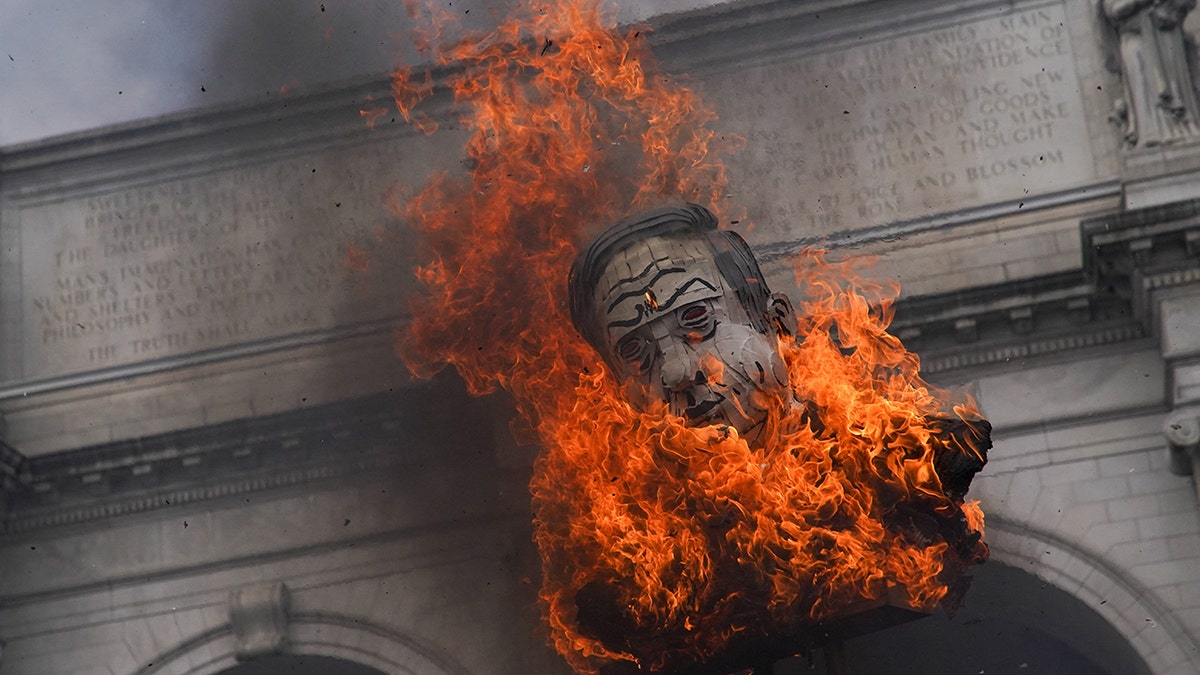
Anti-Israel demonstrators burn an effigy depicting Israeli Prime Minister Benjamin Netanyahu outside Union Station on the day of Netanyahu’s address to a joint meeting of Congress on Capitol Hill in Washington July 24, 2024. (Reuters/Nathan Howard)
The White House condemned the protests Wednesday evening, calling the chaos “disgraceful.”
“Identifying with evil terrorist organizations like Hamas, burning the American flag or forcibly removing the American flag and replacing it with another is disgraceful,” White House spokesperson Andrew Bates said in a comment to Fox News Digital Wednesday evening.
Politics
Ali: Kamala Harris has a campaign soundtrack: Beyoncé's 'Freedom'

Vice President Kamala Harris’ bid for the presidency has a soundtrack: Beyoncé’s “Freedom.”
The leading Democratic presidential candidate took the stage in her first visit to her Wilmington, Del. campaign headquarters and again during her first campaign rally in Wisconsin as the song played.
Now the cathartic anthem graces Harris’ first campaign ad, in which she says: “There are some people who think that we should be a country of chaos, of fear, of hate. But us? We choose something different: We choose freedom.”
Pit that against the musical number her competitor chose for his grand entrance on Night 3 of the Republican National Conference. Donald Trump walked out to James Brown’s “It’s a Man’s, Man’s, Man’s World,” a tone-deaf choice for a former president found liable for sexual abuse, who’s bragged about sexually assaulting women, a married man who paid hush money to a porn star and a former president who rolled back women’s reproductive rights 50 years with the repeal of Roe vs. Wade.
Maybe the Godfather of Soul would have endorsed Trump’s usage of his song, but Brown would be breaking with decades’ worth of musicians who’ve decried GOP candidates playing their tracks at rallies and booster events. Adele, Rihanna, R.E.M., the Rolling Stones, Prince, Neil Young, Guns N’ Roses and Queen are among the many artists who’ve spoken out against Trump using their tunes for campaign purposes.
Heart bristled when the McCain-Palin campaign used “Barracuda.” Tom Petty insisted George W. Bush back away from “I Won’t Back Down.” Bruce Springsteen decried Ronald Reagan’s appropriation of “Born in the U.S.A.”
Beyoncé, however, gave Harris her blessing to use “Freedom,” a single from her 2016 blockbuster album “Lemonade.” The song, which features guest rapper Kendrick Lamar, is an explosive expression of empowerment. At the time of its release, it spoke to public outcry around police killings of unarmed Black men and women — Eric Garner, Tamar Rice, Freddie Gray — and protests that were largely fueled by the ire of younger generations.
Whether Beyoncé was singing about the tyranny of a cheating spouse or racial injustice (or both), the song became an anthem for a new, potentially potent block of the American electorate.
For the first time, Gen Z and millennials could now account for as many votes as baby boomers and their elders, groups that have made up a majority of the electorate for decades.
Folks under 40 have grown up with Beyoncé and her ubiquitous work. Think of Beyoncé like the Who for boomers — their work is everywhere (Republican Sen. Rand Paul played the band’s anti-war hit “Baba O’Riley” when he campaigned in 2015) — or Nirvana for Gen X, except no one cares what we think. Whatever, nevermind.
The Harris campaign’s smart choice of music coincides with a willingness to lean into a meme culture that shot up organically around the 59-year-old VP since President Biden announced Sunday that he was dropping out of the race.
Pop star Charli XCX showed her support for Harris when she tweeted “Kamala IS brat.” The British singer is referring to the TikTok and Twitter edits of Harris’ image superimposed to songs from Charli XCX’s hit album “Brat.” The avalanche of memes come from a video clip in which Harris talks about her mother’s response to the hubris of youth: “You think you just fell out of a coconut tree? You exist in the context of all in which you live and what came before you.”
Right-wing social media used the quote to deride Harris as inarticulate and a “word salad” master, but liberal swaths of Gen Z have since reworked the clip into emojis and memes that celebrate Harris’ nonconformist approach. She’s become a viral sensation, in a good way, unlike J.D. Vance’s damning “single cat lady” memes and a cringey internet joke about encounters with couches.
It’s rare that relevant talent will shill for a Republican candidate. Case in point: Trump’s pop culture ambassadors at this year’s RNC were Kid Rock, Kanye’s ex Amber Rose and former WWE wrestler Hulk Hogan, whose big moment was ripping his shirt off and screaming “Let Trump mania run wild!”
Harris chose to let freedom ring, and she has Queen Bey behind her.
Politics
Texas sues Biden administration over program giving birth control to teens without parents' knowledge

Texas officials are challenging a recent order from President Biden’s administration that would allow schools to distribute birth control to teenagers without parental consent.
Texas Attorney General Ken Paxton announced Thursday that his office is suing the Biden administration over their 2021 change to Title X guidelines banning parental consent requirements for birth control services.
“By attempting to force Texas healthcare providers to offer contraceptives to children without parental consent, the Biden Administration continues to prove they will do anything to implement their extremist agenda — even undermine the Constitution and violate the law,” Paxton said in a statement.
TRUMP SAYS HE ‘WILL NEVER ADVOCATE IMPOSING RESTRICTIONS ON BIRTH CONTROL’ OR OTHER CONTRACEPTIVES
A woman takes the next pill from a monthly pack of contraceptive pills. (Annette Riedl/picture alliance via Getty Images)
The Texas legal battle began in Dec. 2021 when US District Judge Matthew Kacsmaryk ruled that Title X — the federal program that provides free, confidential contraception to anyone regardless of age, income or immigration status — violates parental rights and violates state and federal laws.
The case was argued by former solicitor general of Texas Jonathan Mitchell, representing father Alex Deanda, who said he was “raising each of his daughters in accordance with Christian teaching on matters of sexuality, which requires unmarried children to practice abstinence and refrain from sexual intercourse until marriage.”
SCHUMER PLANS VOTE ON ‘CONSTITUTIONAL RIGHT TO CONTRACEPTION’ IN BID TO PROTECT SENATE DEMOCRAT MAJORITY
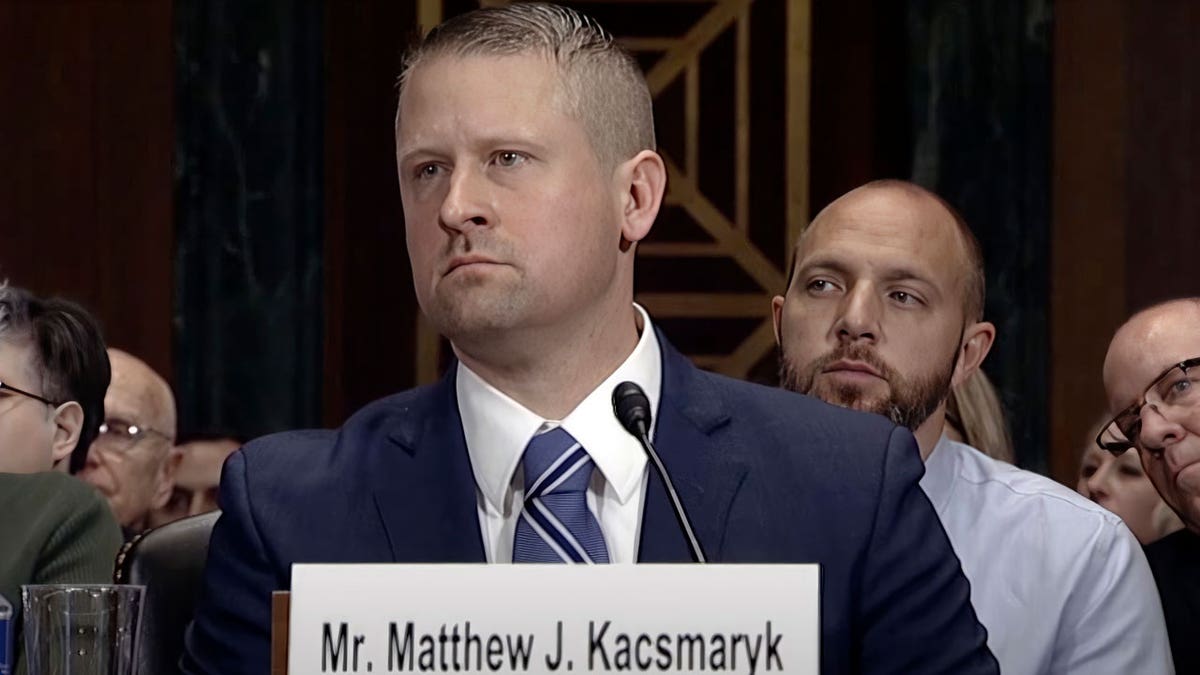
Kacsmaryk, a Trump appointee, previously ruled that parents must be informed when birth control is provided to their children under 18 years old. (Senate Judiciary Committee via AP)
In response, the federal government updated guidelines to state that Title X projects “may not require consent of parents or guardians for the provision of services to minors, nor can any Title X project staff notify a parent or guardian before or after a minor has requested and/or received Title X family planning services.”
Paxton is now seeking a permanent injunction on this rule, which he claims defies the findings of the federal court.
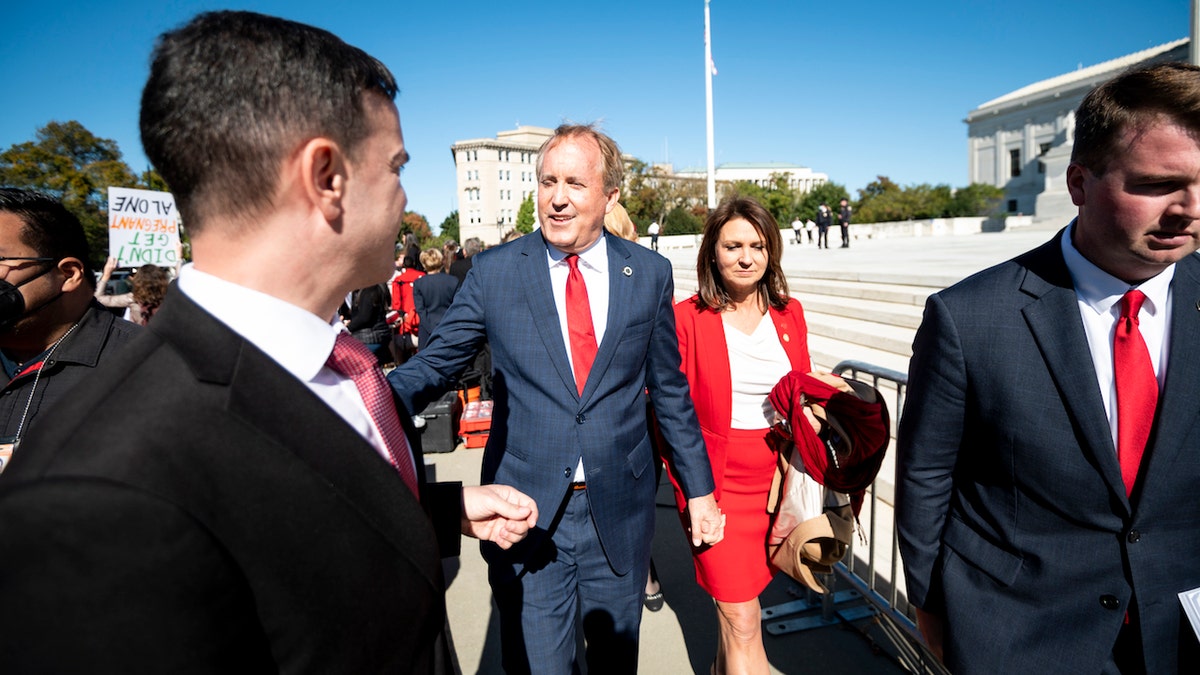
Paxton and his wife Angela are pictured outside the Supreme Court. (Bill Clark/CQ-Roll Call, Inc via Getty Images)
Paxton filed the lawsuit in a federal court in Amarillo. It will likely be heard by Kacsmaryk, the same judge who previously ruled parents must be informed of birth control provided to their children.
-

 World1 week ago
World1 week agoOne dead after car crashes into restaurant in Paris
-

 Midwest1 week ago
Midwest1 week agoMichigan rep posts video response to Stephen Colbert's joke about his RNC speech: 'Touché'
-

 News1 week ago
News1 week agoVideo: Young Republicans on Why Their Party Isn’t Reaching Gen Z (And What They Can Do About It)
-

 News1 week ago
News1 week agoIn Milwaukee, Black Voters Struggle to Find a Home With Either Party
-
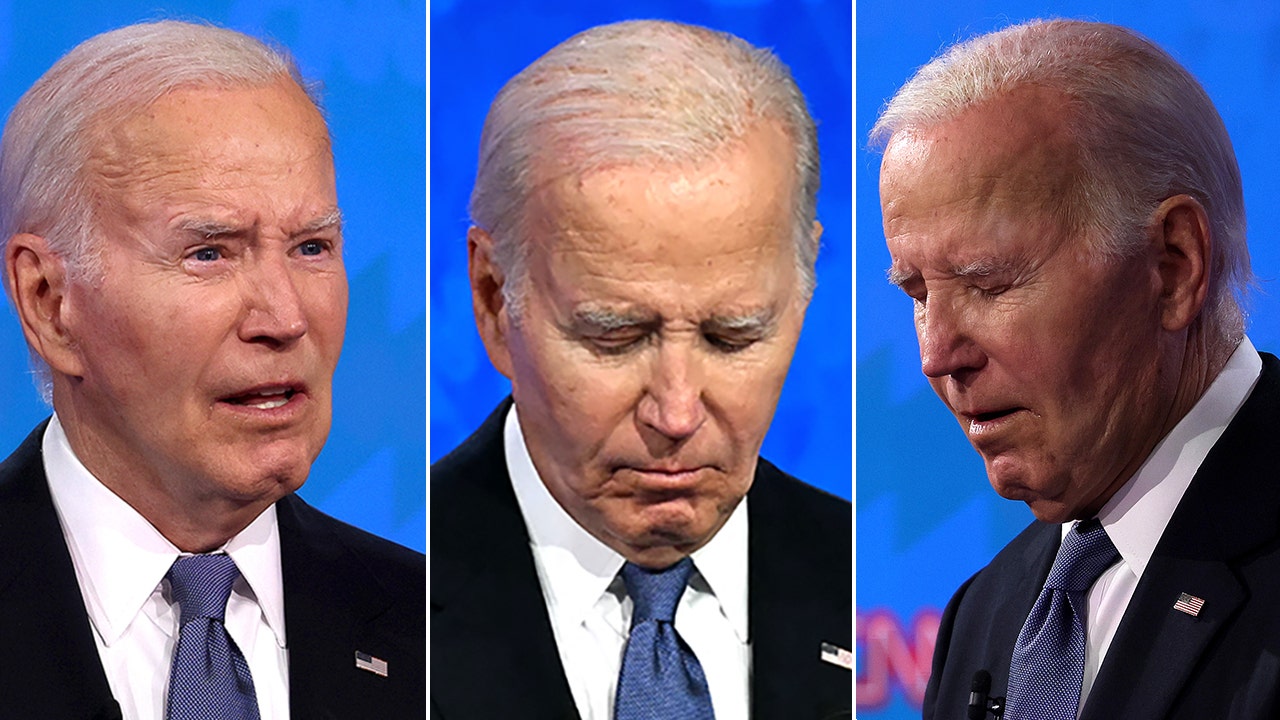
 Politics1 week ago
Politics1 week agoFox News Politics: The Call is Coming from Inside the House
-

 News1 week ago
News1 week agoVideo: J.D. Vance Accepts Vice-Presidential Nomination
-

 Movie Reviews1 week ago
Movie Reviews1 week agoMovie Review: A new generation drives into the storm in rousing ‘Twisters’
-

 World1 week ago
World1 week agoTrump to take RNC stage for first speech since assassination attempt
